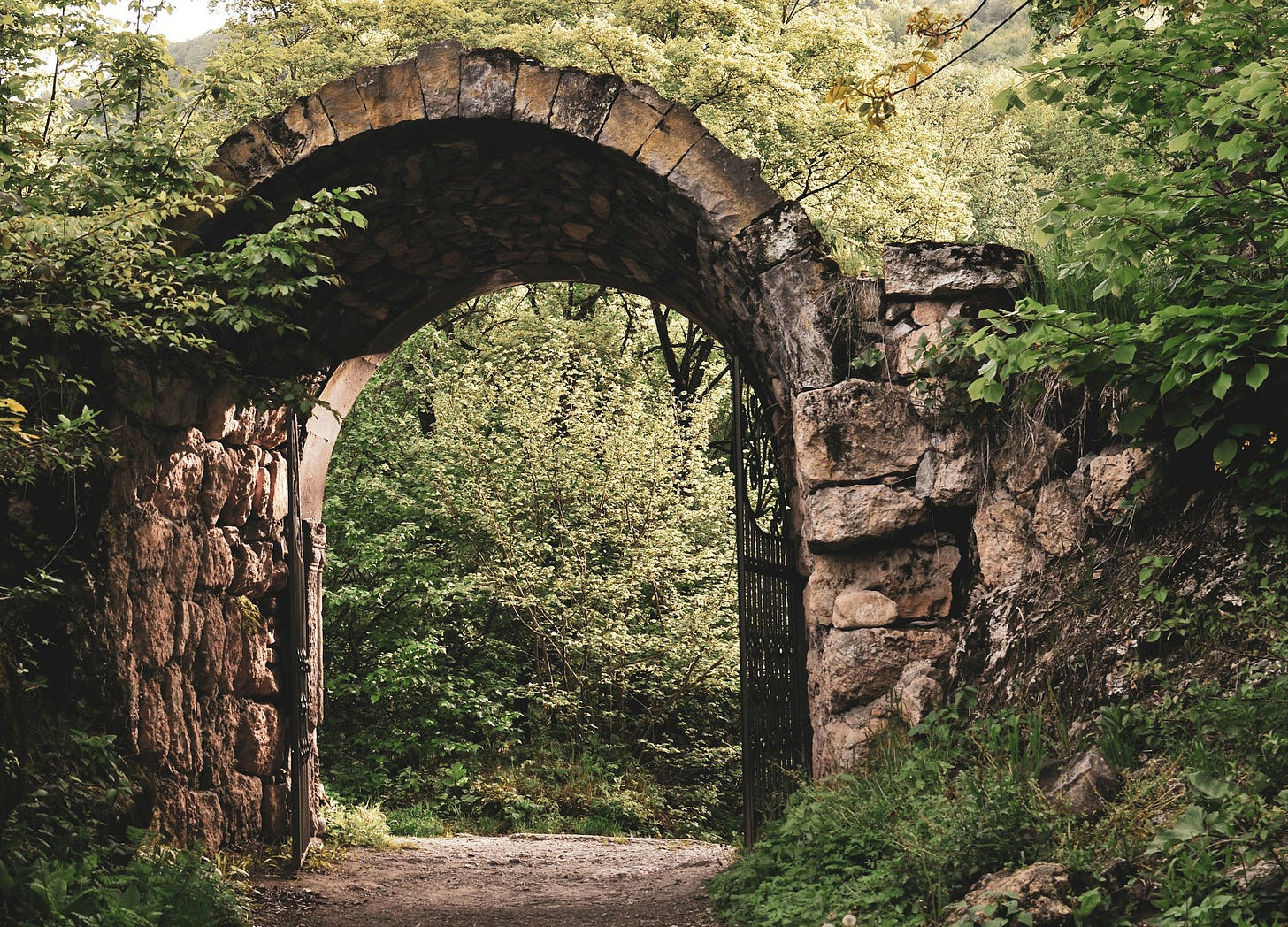The Gate Stands Open
Connect with the natural world—the parts that breathe and the parts that are breath.
Scientists report that time spent in natural environments is associated with mental health and cognitive benefits, and theories as to why are not far behind. Mama Ephemera has her own ideas about it, so I wrote a guided meditation for connection with the natural world all around. In another departure from the usual essay, I’m also, for the first time, posting an audio version. Let me know what you think!
To begin, make yourself comfortable.
Close your eyes and tune in to your breath and to your body. Release those places you might be holding tension—forehead… jaw… shoulders… belly.
It’s a pleasantly warm day. You are outside, moving easily down a gentle, grassy slope.
Ahead is a border of small trees—dogwood, redbud, hawthorn. Some of them are still flowering. Wands of forsythia have already bloomed and are now green with leaves.
In their midst you see a gate, high and wide enough to pass through easily.
Honeysuckle twines around the wooden posts and the beam overhead. Its flowers are just budding out. Even though they are not yet ready to offer their drop of nectar, you can almost taste it.
The gate has no lock, no latch. It stands ajar, inviting you.

Before you push it open, reflect on what might await you. Recall times that thresholds have led to transition, to change.
Maybe comfort, and ease.
Or, to discovery and surprise.
To welcome.
Somewhere deep inside you understand that crossing this threshold offers a chance to become more closely connected with the natural world and its expression of the divine.
The parts that breathe and the parts that are breath.
As you breathe in, think of the leaves around you, high and low, that freely provide oxygen, crucial to your existence.
Breathe out. Those very same leaves use the carbon dioxide you exhale to convert the light of the sun—all that visible energy—into energy for your own body, by making nutrients.
Notice the awe spreading all the way through to your fingers and toes.
Listen—birds are singing in trees and shrubs.
Feel the breeze on your cheek.
In some Native languages, the name for plants translates to “those who take care of us,”1 writes Robin Wall Kimmerer. As you breathe this air with its flavors of plants, think about the ways the natural world takes care of you, with its gifts of:
Food
Heat
Shelter, including materials for roofs, walls, bedding
Fiber for clothing and shoes
Medicine
And just as important: beauty
Marvel at the Earth’s infinite provision for us.
Let gratitude and wonder expand within you.
The sun continues its course through the sky.
It’s time now to return through the gate that brought you to this place of wonder. As you move through, look back toward the gate. It remains, waiting for you to open it again.
Now look ahead. See with new eyes how care and provision are embodied in each tree and sapling, each blade of grass. In the wind, and in the warmth of the sun.
Welcome into your being joy, awe, and peace.
Carry them with you into the rest of your day.
Robin Wall Kimmerer, Braiding Sweetgrass: Indigenous Wisdom, Scientific Knowledge, and the Teachings of Plants. (Milkweed Editions, 2013) p. 224.


The gate has no lock, no latch. It stands ajar, inviting you.